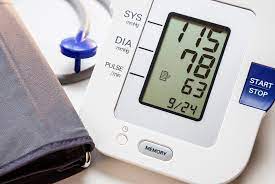Welcome to the first article in our series on trigger points and their impact on pain patterns. At our acupuncture clinic in Brisbane, we provide acupuncture, remedial massage and cupping therapy to support our patients’ performance and health. In this article, we provide a comprehensive understanding of how muscle imbalances, particularly those caused by trigger points, can affect your overall well-being. This post will focus on the upper trapezius muscle which is one of the most common areas where trigger points develop, and will discuss how acupuncture and dry needling can offer relief.

What is the Upper Trapezius Muscle?
The trapezius muscle is a large, diamond-shaped muscle that spans the upper back and neck, extending from the base of your skull to the middle of your back and outward to your shoulders. It is divided into three parts: the upper, middle, and lower trapezius. The upper trapezius, in particular, plays a key role in supporting the head and neck, as well as assisting with shoulder movements.
This muscle can become a source of discomfort due to overuse, poor posture, and stress, leading to the development of trigger points that cause localized pain and discomfort.
What are Trigger Points?
Trigger points are tight knots of muscle fibres that form when muscles are overstressed, overworked, or injured. They are often associated with chronic pain, muscle stiffness, and decreased range of motion. Trigger points can refer pain to other areas of the body, making diagnosis and treatment complex.
Upper Trapezius Trigger Point Symptoms
Trigger points in the upper trapezius can lead to a range of symptoms, including neck stiffness, headaches, and pain radiating down the shoulder and arm. When these trigger points are left untreated, they can lead to a cycle of discomfort and possibly worsen posture, further aggravating the issue.

Factors That Cause Upper Trapezius Trigger Points
Several factors contribute to the development of trigger points in the upper trapezius.
Common causes include:
- Poor Posture
One of the most common causes of upper trapezius trigger points is poor posture, especially for those who spend long hours sitting at desks or looking at screens. Slumping forward or craning the neck to view a screen can put undue stress on the upper trapezius. This can make the muscle get shorter and tighter as time goes on leading to trigger points.
- Stress and Tension
Emotional and physical stress can also contribute to upper trapezius trigger points. When you’re stressed, your body tends to tense up, and the upper trapezius is one of the first muscles to react. This prolonged tension can lead to the formation of trigger points.
- Repetitive Movements
People who engage in activities that require repetitive shoulder or neck movements, such as lifting, typing, or playing musical instruments, are at higher risk of developing trigger points in the upper trapezius. These activities can lead to muscle fatigue and strain, setting the stage for trigger points to form.
- Injury or Trauma
Accidents, falls, or even whiplash injuries can create muscle damage, leading to trigger points in the upper trapezius. The muscle may tighten in response to the injury, leading to the formation of trigger points and causing ongoing pain.
- Sleeping Position
Sleeping on an unsupportive pillow or in an awkward position can strain the upper trapezius muscle. This strain can eventually lead to trigger points if the posture is sustained over time.
Pain Referral Patterns of Upper Trapezius Trigger Points
One of the hallmarks of trigger points is their ability to refer pain to other areas of the body. The upper trapezius is no different. When trigger points form in this muscle, they can cause pain to radiate into several areas. Common referral patterns for upper trapezius trigger points include:
- Headaches: One of the most common symptoms is tension-type headaches, which can be caused by tightness in the upper trapezius. These headaches often feel like a dull, aching pain around the forehead and temples.
- Neck Pain and Stiffness: Trigger points in the upper trapezius can cause pain and stiffness in the neck, often making it difficult to turn the head or look up.
- Shoulder Pain: The pain from the upper trapezius trigger points can radiate down to the shoulder. This is commonly felt as a deep, aching discomfort that worsens with movement.
- Arm Pain: In some cases, the pain can travel down the arm, mimicking the symptoms of a pinched nerve or other conditions.
Satellite Trigger Points: How Upper Trapezius Affects Other Muscles
Trigger points in the upper trapezius can also lead to the development of satellite trigger points in other muscles. These are areas where the pain and tension from the original trigger point spread and cause new trigger points to form. Common muscles that can develop satellite trigger points due to upper trapezius involvement include:
- Levator Scapulae: The levator scapulae muscle, which runs along the side of the neck and shoulder blade, is often affected when the upper trapezius has trigger points. Pain from the levator scapulae may feel like a dull ache along the side of the neck or the shoulder blade.
- Rhomboids: The rhomboid muscles, located between the shoulder blades, are commonly affected by trigger points in the upper trapezius. These trigger points can cause a deep ache between the shoulder blades and may lead to difficulty reaching or lifting the arms.
- Sternocleidomastoid (SCM): The SCM, which runs along the front of the neck, is another muscle that can develop satellite trigger points. This can lead to pain that radiates into the front of the neck, head or jaw area.
- Supraspinatus: The supraspinatus, one of the rotator cuff muscles, can also develop satellite trigger points due to tightness in the upper trapezius. This can lead to pain and weakness in the shoulder, especially when lifting the arm overhead.
How Acupuncture and Dry Needling Can Help Relieve Upper Trapezius Trigger Points in Brisbane
At our acupuncture clinic in Brisbane, we use a variety of techniques to treat trigger points and the pain they cause. Two effective methods are acupuncture and dry needling, both of which can target the root cause of muscle tension and provide lasting relief.
Acupuncture for Trigger Points
There are several acupuncture points located directly within the upper trapezius muscle. The acupuncture points 肩井 Jiānjǐng (GB21) and 天髎 Tiānliáo (SJ15) correspond perfectly with common locations for upper trapezius trigger points. Needling these points has a long history of use for treating common symptoms of upper trapezius trigger points such as pain and stiffness of the neck and shoulder.
Dry Needling for Trigger Points
Dry needling is a specialized technique that targets trigger points directly by inserting a needle into the knot of muscle fibres. This process causes the muscle to relax and release the tension, providing quick relief from pain and stiffness. Dry needling can be especially effective for treating upper trapezius trigger points, as it helps to break the cycle of muscle tension and pain.
Are acupuncture and dry needling the same?
The Standard International Acupuncture Nomenclature defines dry needling, also known as trigger point needling, as a subset of acupuncture. In fact, the current practice of acupuncture and dry needling involve the same biological mechanism, the same or similar points and needling techniques, and the same needles.Both acupuncture and dry needling are non-invasive, drug-free therapies that can help restore proper function to the upper trapezius and surrounding muscles.
You can learn more about the similarities and differences between the two in our blog.
Seek Professional Help for Upper Trapezius Trigger Points in Brisbane
If you are suffering from pain in the neck, shoulders, or upper back due to trigger points in the upper trapezius, seeking professional treatment can help you regain mobility and reduce discomfort. At our acupuncture clinic in Brisbane, we specialize in providing customized treatments, including acupuncture and dry needling, to address the root causes of your pain.
Stay tuned for future articles in our trigger point series, where we will explore other common trigger points and how they affect the body.
Book an appointment today and experience the benefits of acupuncture and dry needling in relieving your trigger point pain. Your path to a pain-free life starts here! Learn what to expect during your first visit here.





